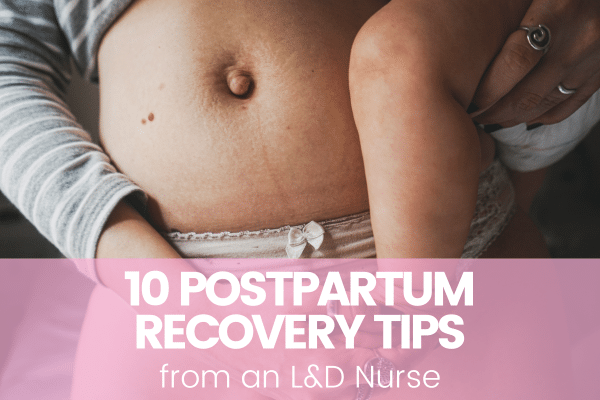10 Postpartum Recovery Tips from an L&D Nurse

So, you’re bringing your baby into the world. And isn’t that incredible? But, the recovery afterward can be just as intense as pregnancy itself. You put yourself in the hands of Labor & Delivery (L&D) nurses because they know what helps new moms heal faster, feel stronger, and avoid common pitfalls. Here are 10 postpartum recovery tips you’ll be glad to know… straight from those who see moms like you through this journey every day.
1. Prioritize Rest (Even in Small Doses)
Sleep may not come in long stretches. Nap when your baby naps, and accept help with chores so your body can heal.
2. Nourish with Iron-Rich Foods
Blood loss during birth is normal. It’s great to refuel with iron-rich foods like lentils, beans, spinach, fortified cereals, and lean meats… and they should be careful to pair them with vitamin C foods like oranges or strawberries for better absorption.
3. Stay Hydrated
When you breastfeed, you are going to lose fluid. And you need to physically recover. Which means you need to increase your fluid needs. I like to recommend that you keep a tall glass of water or a water bottle by your bed and nursing chair. Soups and herbal teas also count. You can even try coconut water because it has a lovely electrolyte profile to support your healing.
4. Support Healing with Protein
Protein from tofu, nuts, seeds, quinoa, eggs, poultry, or fish helps repair tissues and replenish strength.
Did you know? Just one cup of quinoa has more protein than an egg. And it has magnesium to ease muscle cramps.
5. Protect Your Pelvic Floor
Do gentle Kegels, avoid heavy lifting, and ask your provider when you can resume more exercise. You may have done prenatal yoga. Well, go to some antenatal yoga classes which have a different focus. Before birth classes focus on opening up the pelvis and after you give birth, classes focus on restoring tone, and physical health, drawing things back in to place.
6. Manage Pain Wisely
Ice packs, sitz baths, and over-the-counter medications (if approved) can ease soreness.
Pro Tip: A sitz bath is a warm, soothing shallow soak of the perineum (the area between the anus and the genitals). You may need to try it to relieve pain, itching, and irritation, and promote healing.
7. Eat Fiber to Prevent Constipation
Whole grains, fruits, and vegetables keep digestion regular, especially if you’re taking iron supplements (which, depending on the type may cause constipation. Some don’t.).
8. Watch for Warning Signs
Call your doctor if you notice heavy bleeding, fever, severe pain, or swelling. Trust your instincts. See help if you think something isn’t right.
9. Build a Support Circle
Accept meals, help with laundry, or emotional support from friends and family. Besides, people like to help! You don’t have to do it on your own.
10. Be Kind to Yourself
Your recovery is unique. Don’t compare yourself to others. Every body is different. Your recovery will be different to that of your friends. Just know that slow, steady healing is normal.
Final Thoughts for Moms
Postpartum recovery is a season of healing. With nourishing food, hydration, gentle care, and a little help, you’ll regain strength day by day. Remember to take care of yourself. It’s all part of taking care of your baby.
FAQs
Q1: What foods help with postpartum recovery?
A1: Iron-rich foods (lentils, beans, spinach, lean meat), protein (nuts, tofu, fish), and fiber (whole grains, fruits, vegetables).
Q2: How long does postpartum recovery take?
A2: It varies from person to person. Your recovery may be physical or emotional and varying degrees of either or both. Many moms start feeling stronger after 6 weeks, but full recovery can take months.
Q3: When should I call my doctor postpartum?
A3: If you notice heavy bleeding, fever, severe pain, or unusual swelling, seek care right away. It’s always better to ask than to leave something too long.


